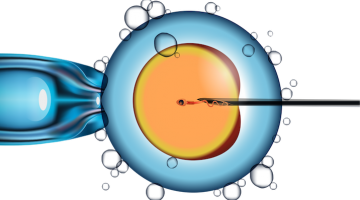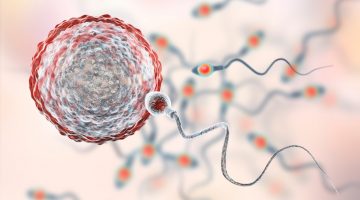Gender Selection with IVF: Treatment Details & Cost


Many couples, for various reasons and beliefs, wish to select the sex of their next child. Amazingly, scientific advances allow gender selection of future children to be done with near 100% accuracy. But what exactly is it going to take to choose the sex of your next child and what exactly does gender selection cost?
Fast Facts About Gender and Sex Selection
- Gender selection is also widely known as sex selection with the two terms being used exchangeably. It may also be referred to as family balancing as some people choose to do it to have a child of a specific sex after having many children of the other.
- There are two main methods of gender selection though only one is widely accepted and used by the reproductive medical community today. There are other alternative theories involving diet and other modalities, though these have no scientific backing and should not be taken seriously until proven so.
- Sex selection is possible because males and females have different sex chromosome combinations. Females have an XX chromosome pair and males have an XY chromosome. Being able to selectively choose sperm that contain a desired X or Y chromosome or embryos containing either XX or XY chromosome pairs enables one to choose the sex of their child.
- Gender selection is not a stand-alone service. The preferred method of sex selection involves In Vitro Fertilization (IVF) in conjunction with Preimplantation Genetic Testing (embryonic testing – also known as PGS or PGD).
- The cost of gender selection is highly variable due to differences between clinics and also what services are included in the quoted price. The average cost of gender selection is around $4,500 on top of the cost of IVF with an FET of around $22,000. Here at CNY those prices are closer to $2,000 and $8,000 respectively (including the cost of medications) making CNY an ultra-affordable place to have gender selection.
- Due to the high cost of gender selection, many people price shop and travel to clinics like CNY to receive affordable sex selection treatment.
How Does Gender Selection Work?
The sex or gender of the baby is determined by two chromosomes known collectively as the Sex Chromosomes. Egg cells from the female always carry an X chromosome while male sperm carries either an X or a Y chromosome. If a sperm with an X chromosome meets the mother’s egg, then the resulting embryo and baby will be a girl with an XX chromosome. If a sperm with a Y chromosome fertilizes the woman’s egg cell, then the resulting child will be a boy with an XY chromosome.
As you likely already know, there is a pretty much even 50/50 split between boys and girls conceived naturally. Thus in order to confidently determine the sex of your future child, you must be able to accurately select a sperm that contains a Y Chromosome or an embryo that has XY chromosomes.
Sperm Sorting Method – Gender Selection with Artificial Insemination: Not Accurate and Not Widely Practiced in the USA
Sperm sorting is a method of sorting sperm based on fact that X chromosomes contain slightly more DNA than Y chromosomes. Some methods sort the sperm with a centrifuge while others tag the DNA with a fluorescent dye. In theory, the sperm containing X chromosomes will sort by density and end up towards the bottom when being centrifuged and will shine more brightly when using the fluorescent dye method.
In theory, this method could be used for both IUI or IVF.
While some studies have shown some effect, it is not a greatly reliable method and not offered at many fertility clinics throughout the united states, including here at CNY Fertility.
Gender Selection with IVF and Embryonic Genetic Testing
Gender selection with IVF and Preimplantation Genetic Testing is the most advanced method of sex selection with virtually 100% accuracy. During this method, a small number of cells from an embryo made via IVF are removed from an embryo several days after fertilization and sent to a genetics lab for chromosomal analysis. After the biopsy, the embryos are immediately frozen to await the results from the genetic analysis. After the results are in, a decision is made by the intended parents which embryo to thaw and perform a frozen embryo transfer with. This method allows you to choose the sex of the child with over a 99.9% accuracy.
Detailed Steps of IVF Gender Selection
Because accurate gender selection requires In Vitro Fertilization, which in and of itself is a fairly intensive process, it’s important to understand at least at a basic level, what the whole process will entail. In general, IVF has 4 main steps:
- Ovarian Stimulation: The woman takes hormone-based medications with the goal of making many high-quality fully developed eggs (as opposed to the one that is usually made).
- Egg Retrieval: Removes the eggs from the ovaries.
- The Embryology Laboratory: Fertilization of the eggs, embryo development for 3-7 days
- Embryo Transfer: An embryo transfer is the process of putting an embryo back into the intended parent’s uterus.
Because gender selection requires additional embryonic testing (which takes a number of days to get the results from) it not only requires additional steps specific to the testing of the embryos, but it requires two “treatment cycles.” One involves the making and testing of the embryos and the other, a Frozen Embryo Transfer Cycle that involves the preparation of the uterus for transfer and the FET itself.
Phase 1: The Embryo Making & Testing Cycle
This portion of the treatment is relatively similar to an embryo freezing treatment in that embryos are made via IVF and then frozen. Of course, before being frozen, they are biopsied and sent to a lab for testing.
Ovarian Stimulation:
Same as above, the woman takes hormone-based medications with the goal of making a number of mature, high-quality eggs. These stimulation medications are most often started on days 2-4 of a woman’s natural menstrual cycle and taken for 10 days. The idea here is, more eggs = more embryos = more embryos of desired sex = higher odds of achieving a live birth from an embryo that has the desired sex.
Egg Retrieval:
Again, the egg retrieval is the surgical procedure the harvests the eggs from the ovaries. It usually takes place around 12 days after the start of stimulation medications, but can vary depending upon the response to the medications and subsequent follicular/egg development which is measured during ultrasound and bloodwork monitoring appointments. It is a relatively mild procedure as far as operations go. It requires no incisions or stitches and does not use general anesthesia (which requires intubation and a significant recovery time). Instead, the patient is put under moderate sedation with MAC anesthesia while an aspiratory needle is guided with ultrasound through the vagina and into the follicles on the ovaries. Once removed from the ovaries, the test tubes containing the follicular fluid and mature eggs are taken immediately to the embryology lab.
The Embryology Laboratory:
The steps that happen inside the embryology lab during gender selection can be broken down into 5 main steps:
- Isolation: Once the eggs are inside the laboratory, an embryologist will search the follicular fluid and isolate any egg that is found. It will be immediately placed in nourishing media mimicking the fallopian tube environment.
- Fertilization: Approximately 4 hours from the time of retrieval, the embryos will be fertilized using ICSI or conventional fertilization methods.
- Embryo Development: After fertilization, the embryos will grow in the lab for 5-7 days. While in a standard IVF cycle, it’s possible to transfer embryos after only 3 days (when they are at a cleavage stage of development) genetic testing can only be performed on blastocyst embryos which usually develop on day 5 (but can develop slightly later).
- The Embryo Biopsy: Once at the blastocyst stage, the embryo is composed of two different types of embryonic tissue. One of those groups of cells will become the fetus, the other will become the placenta. The biopsy is done using a highly specialized and focused laser which removes a small number (usually 3-6 cells) from a group of cells that will become the placenta (called the trophectoderm). These cells are then labeled, processed, and shipped expediently to a third-party genetics lab for analysis.
- Embryo Freezing: After the embryonic biopsy procedure is complete, the embryologists will vitrify (or flash freeze) the embryo which preserves them in a state nearly identical to as they are when fresh. Freezing the embryos allows for the time needed to receive the results of the genetic testing and has virtually no effect on the quality or odds of success of a subsequent transfer. In fact, there is some evidence to suggest that frozen transfer results in higher odds for a significant portion of those undergoing IVF.
The Genetic Testing:
The actual genetic testing is performed by a third-party genetics laboratory using a technique known as Preimplantation Genetic Testing for Aneuploidy (PGT-A) which analysis the number and type of chromosomes in each cell. With the chromosomal analysis done, a group of cells belonging to a specific embryo will be labeled as either XY or XX along with other basic information pertaining to the number of chromosomes in each cell. With this information, the intended parents and the fertility clinic can now prepare for a Frozen Embryo Transfer using a thawed embryo of the desired sex.
Phase 2: The Frozen Embryo Transfer Using an Embryo with the Desired Sex
A frozen embryo transfer is much simpler than the first phase of an IVF cycle and includes only two main steps:
- Uterine Lining Development: When transferring an IVF embryo, it’s important to ensure the uterus is optimally prepared for the embryo to implant into the endometrial lining. While it’s possible to do a natural FET cycle in which no medications are taken, it is usually highly medically advised that the woman take Estrogen and Progesterone for a period of time prior to and after the embryo transfer.
- Frozen Embryo Transfer: For an embryo transfer using genetically tested embryos for gender selection, one of the embryos that has been identified as being the desired sex will be removed from the cryo tanks containing liquid nitrogen and thawed. Once thawed, the embryos will be loaded into a medical-grade transfer catheter, passed through the vagina and cervix, and expelled into the uterus. The intended parent is now pregnant (until proven otherwise) with an embryo that will grow into a fetus and child of the sex of their choosing.
How much does Gender Selection cost?
The cost of Gender Selection is highly variable as it is usually composed of many different fees. That said, the average cost of gender selection in the USA is around $4-,5000, but can be as low as $2,000 at some clinics (like here at CNY – though pricing varies based on the number of embryos being tested). The sex/gender selection fees are generally split into two different components:
Fertility Clinic Biopsy Fees: This is the fee of taking the embryonic tissue biopsy and preparing it to be sent to a genetics lab for analysis.
Genetic Lab Fees: This is the fee that the genetics lab charges for the actual testing of the embryonic cells, which will determine the sex of each embryo.
Together these fees will usually come in around $4-5,000, but here at CNY Fertility, these fees most often come in around $2-3,000.
Additional Fees
When people quote for gender selection itself, they are generally only referencing the lab biopsy fees and the genetic testing fees, but as mentioned, sex or gender selection can not be done without IVF. Similar to the cost of gender selection fees, the cost of IVF ranges widely and includes many components. Below are the components that will be necessary to perform a gender selection procedure.
- Base IVF: This is a base IVF package that includes most of the procedure-related expenses.
- Monitoring: Monitoring is the process of observing the hormonal and follicular/egg development during IVF stimulation to ensure a safe and properly timed procedure.
- Medications: The medications used in IVF will help the woman produce multiple eggs. More eggs generally means more embryos. More embryos means a higher chance that one of the embryos will be the sex you’re hoping to choose
- Frozen Embryo Transfer (FET): An FET is a type of embryo transfer in which previously frozen embryos are thawed and transferred into the woman’s uterus. Because it takes a good bit of time to get the results back for the genetic testing necessary to determine the sex of the embryo, the embryos must be frozen. Once the results are in, the desired embryo can be thawed and transferred.
Some clinics may also charge extra for things like ICSI, which may be required for many.
The Total Cost of Gender Selection
The average total cost of gender selection is around $27,000. At CNY Fertility, the total fee often comes in around $11-12,000, making it an ultra-affordable option compared to most.
The below calculator will help you easily visualize and see the true cost of gender selection procedures. If you recall the above information, you will need to turn genetic testing, a frozen embryo transfer, medication estimate, and choose either in house monitoring (if you live near one of our clinics) or remote cycle management (if you are like one of the more than 50% of our clients that travel to us from out of the area). Then, depending on your other circumstances may choose to select other add ons.
Automatically Included
-
{{ tick.item }}
Sample Payment Calculator: Self Pay Pricing
-
{{getTreatmentName()}} {{ treatment_price_discount|toCurrency }}
National Average {{ this.treatment_price_others|toCurrency}} -
{{ treatment.data.price.monitor.remote.label }} Remote Cycle Management {{ total_monitor.cny | toCurrency }}{{ treatment.data.price.monitor.in_house.label }} In House Monitoring {{ total_monitor.cny | toCurrency }}{{ treatment.data.price.monitor.remote.note_calc | stripHTML }} {{ treatment.data.price.monitor.in_house.note_calc | stripHTML }} Third-party fixed fee (SAMA) Third Party {{ total_monitor.others | toCurrency }}{{ treatment.data.price.reciprocal_ivf.note_calc || "Reciprocal IVF requires both partners to be monitored" }} {{ treatment.data.price.frozen_transfer.note_calc_monitor || "" }}
-
-
{{ treatment.data.price.frozen_transfer.label }} Frozen Transfer {{treatment.data.price.frozen_transfer.cny|toCurrency}}
-
{{ treatment.data.price.cryo_preserve.label }} Cryopreservation + 1yr Storage {{treatment.data.price.cryo_preserve.cny|toCurrency}}{{treatment.data.price.cryo_preserve.note_calc | stripHTML}} Third Party {{treatment.data.price.cryo_preserve.others|toCurrency}}
-
{{ treatment.data.price.genetic_testing.label }} Genetic Testing {{treatment.data.price.genetic_testing.cny|toCurrency}}{{treatment.data.price.genetic_testing.note_calc | stripHTML}} Third Party {{treatment.data.price.genetic_testing.third_party|toCurrency}}
-
{{ treatment.data.price.medication.label }} Medication Estimate {{total_medication.cny|toCurrency}}{{total_medication.note_calc | stripHTML}} Third Party {{total_medication.third_party|toCurrency}}
-
{{ treatment.data.price.medication.label }} Medication Estimate {{total_medication.cny|toCurrency}}{{total_medication.note_calc | stripHTML}} Third Party {{total_medication.third_party|toCurrency}}
-
{{ treatment.data.price.zymot.label }} ZyMōt Sperm Processing ${{treatment.data.price.zymot.cny}}{{ treatment.data.price.zymot.note_calc | stripHTML}} Third Party ${{treatment.data.price.zymot.third_party}}
-
{{ treatment.data.price.pregmune.label }} Pregmune Reproductive Immunology Testing {{treatment.data.price.pregmune.cny|toCurrency}}{{ treatment.data.price.pregmune.note_calc | stripHTML}} Third Party {{treatment.data.price.pregmune.third_party|toCurrency}}
-
{{ treatment.data.price.donor_eggs.label }} Donor eggs {{total_donor_eggs.cny|toCurrency}}{{treatment.data.price.donor_eggs.note_calc | stripHTML}} Third Party {{total_donor_eggs.others|toCurrency}}
-
{{ treatment.data.price.donor_sperm.label }} Donor sperm {{treatment.data.price.donor_sperm.cny|toCurrency}}{{treatment.data.price.donor_sperm.note_calc | stripHTML}} Third Party {{treatment.data.price.donor_sperm.others|toCurrency}}
-
{{ treatment.data.price.donor_eggs.label }} Donor Package {{total_donor_package.cny|toCurrency}}{{treatment.data.price.donor_package.note_calc | stripHTML}} Third Party {{total_donor_package.others|toCurrency}}
-
{{ treatment.data.price.gestational_surrogacy.label }} Gestational Surrogacy {{treatment.data.price.gestational_surrogacy.cny|toCurrency}}{{treatment.data.price.gestational_surrogacy.note_calc | stripHTML}} Third Party {{treatment.data.price.gestational_surrogacy.others|toCurrency}}
-
{{treatment.data.price.split_cycle.label ? treatment.data.price.split_cycle.label : "Split Cycle Discount" }} {{discount_split_cycle|toCurrency}}
-
5% Military & Veteran Discount {{discount|toCurrency}}
-
Installments Fee {{finance.fee|toCurrency}}
-
Total to CNY {{total.total | toCurrency}}
Estimated 3rd Party Costs {{total.third_party| toCurrency}}
Grand Total {{(total.total + total.third_party)| toCurrency}}
National Average: {{total.national|toCurrency}} -
Down Payment to CNY{{finance.payment_down_amount|toCurrency(2)}}
-
Monthly Payment to CNY{{finance.monthly_payment|toCurrency(2)}}
{{ treatments[treatment_selected]['data']['footnote'] }}
The above calculation is for simulation purposes only. It is reflective of self-pay pricing, includes highly variable estimates paid to CNY and third parties, and national averages obtained through internal research, FertilityIQ, ASRM, and Resolve. Billing through insurance will likely result in substantially different fees. CNY Fertility does not warrant or guarantee any price for services conducted or rendered by a third party and recommends everyone obtain written estimates from any medical facility involved in your treatment as well as verification of coverage from your insurance company prior to beginning treatment.
1 USD = {{currency.rates[currentCurrency]}} {{currentCurrency}}
Last Update {{currency.last_update}}
The Bottom Line
Gender selection is best viewed as an add-on service to IVF. Doing gender selection via PGT and IVF results in transferring embryos of the desired sex with over 99.9% accuracy. Of course, IVF itself has success rates that top off around 50% per transfer, and sex selection generally narrows the number of available embryos in half (assuming the intended parents will not transfer any embryos of the opposite sex). On another note, only 25% of American’s have IVF coverage meaning IVF with Gender selection can be cost-prohibitive for many and leads many to finance their gender selection treatment.
That said, it is a remarkably beautiful tool for those looking to build their family in such a way. For more information on sex/gender selection of family balancing at CNY Fertility, we invite you to schedule a consultation by calling us at 844-315-2229 or by filling out our online consult request form.







